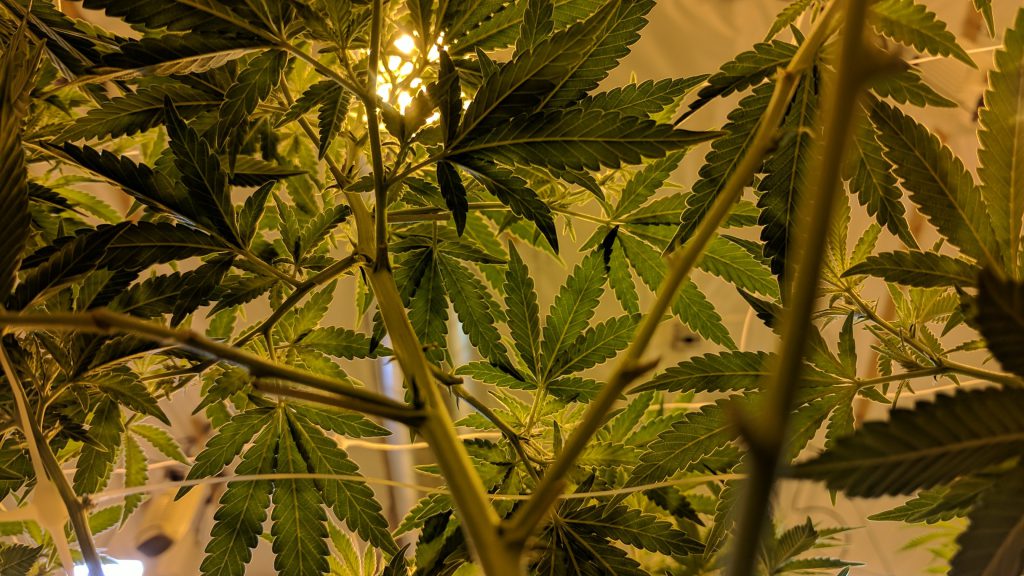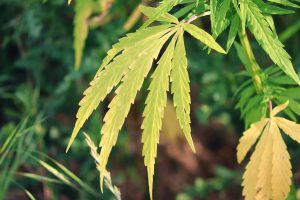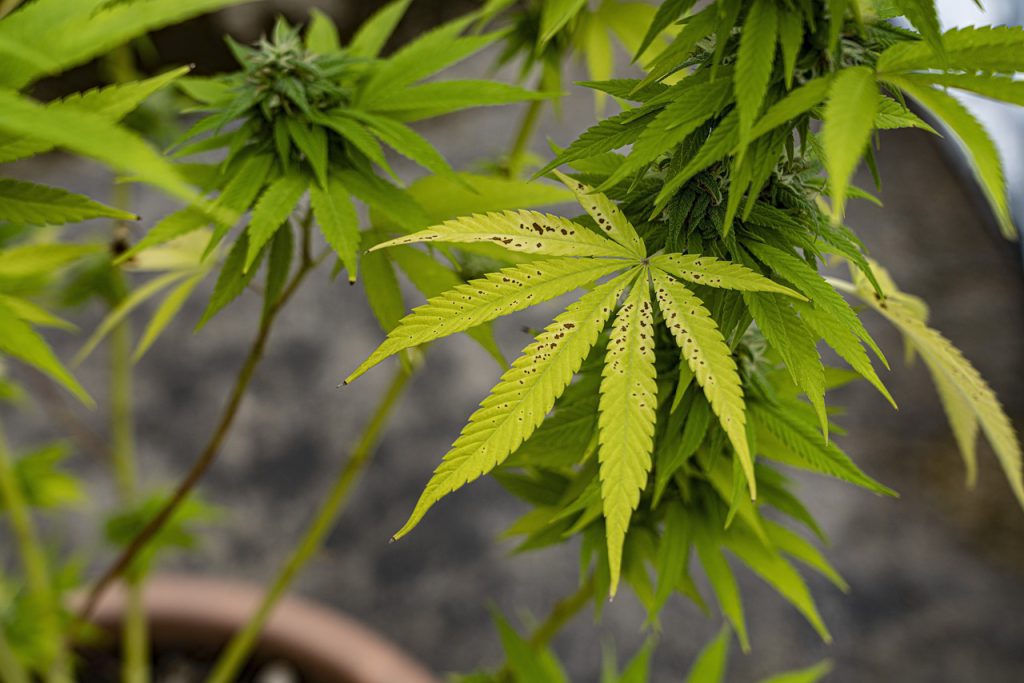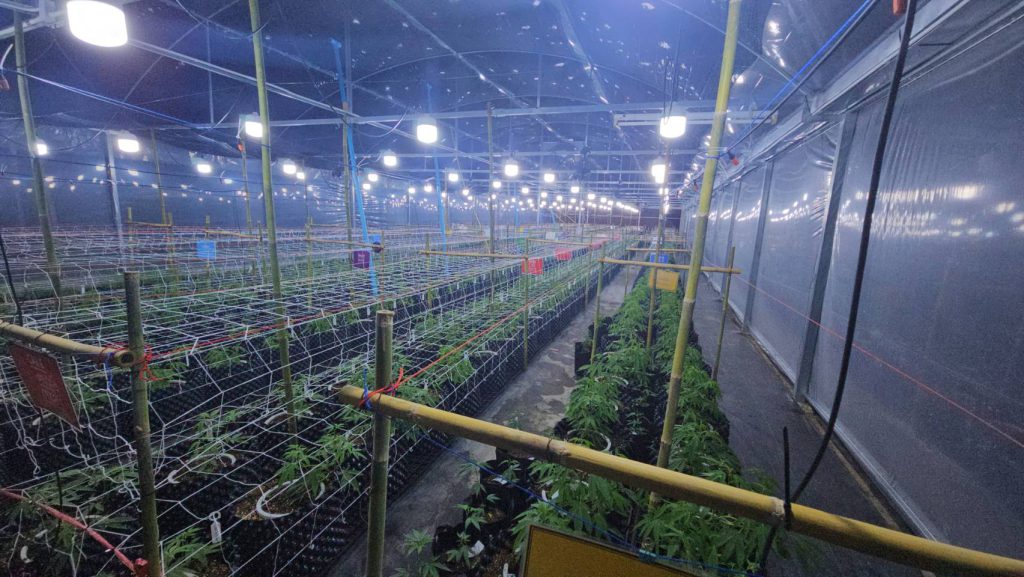Common Problems in Cannabis Cultivation and How to Address Them
A problem with my plant? It’s one of the most frequently asked questions, and the truth is, during cannabis cultivation, along with choosing the right cannabis seeds, there can be various issues that need to be addressed to minimize damage. At Pevgrow, we always want our customers and friends to achieve the best results. That’s why we’ve created this article to review the common problems that typically arise and the best ways to resolve them.
There are three essential macroelements—nitrogen, phosphorus, and potassium—that plants require in significant quantities throughout their life cycle. These elements are mobile, meaning that when plants lack them for new growth, they extract these nutrients from the reserves in older leaves, which subsequently display the problem.
If a marijuana plant is deficient in any of these nutrients, it is said to be lacking, and certain signs indicate the deficiency, which should be recognized and addressed promptly to prevent further complications. If left uncorrected, deficiencies can hinder the plant’s full development and significantly reduce its yield. Therefore, early recognition is crucial, and appropriate action should be taken. Let’s examine each of these elements individually.
Nitrogen Deficiency:
If the plant’s lower leaves start losing their dark green color, it likely indicates a nitrogen deficiency. This issue commonly occurs during the vegetative growth and pre-flowering stages, rather than during flowering or bud maturation. Typically, the discoloration of leaves progresses uniformly from the outer edges inward, although occasional spots may appear, giving a withered appearance that may lead to leaf drop if left uncorrected.
Reasons for Nitrogen Deficiency:
Several factors can contribute to nitrogen deficiency, such as insufficient availability of the nutrient, improper pH that hampers nitrogen assimilation, or an excess of salts or other elements that block nitrogen absorption. Secondary factors like root system problems or imbalances in environmental parameters may also play a role. In soil cultivation, there comes a point where the plant depletes the nitrogen reserves in the substrate. At that stage, transplantation or providing fertilizer mixed with irrigation water becomes necessary. It’s important to ensure that the nutrient solution used for irrigation has a pH of around 6.0 to facilitate quick nitrogen assimilation.
Nitrogen Excess:
Nitrogen excess occurs when the plant receives more nitrogen than it can absorb, resulting in toxicity. Symptoms of nitrogen excess include darker coloration of leaves and curling of leaf tips, resembling a claw. In some cases, leaf tip burns may occur, resulting in hardened leaves with various shades of color. Nitrogen excess can be more detrimental than a deficiency, causing stunted growth and, if not addressed, potential plant death. Flushing the roots to remove excess nitrogen is recommended in such cases.
Nitrogen Blockage:
Certain nutrient compatibilities and incompatibilities can create synergistic or problematic effects. An excess of potassium in the soil, for example, can impede nitrogen assimilation or directly block it. Prompt action is necessary to avoid exacerbating the problem. Using soft water, adjusting pH, and considering the nutrient content in the substrate can help prevent nitrogen blockage. However, failure to recognize the issue and mistakenly assuming nitrogen deficiency might lead to increased fertilizer dosage, further aggravating the problem in certain cases.

Phosphorus Deficiency:
Phosphorus deficiency manifests in the oldest and lowest leaves of plants because it is a mobile element. Instead of paling or yellowing, the leaves may acquire a bluish hue, accompanied by spots or wear marks on the leaf surface. Darkening, purpling, or reddening of the petioles (leaf stalks) connecting the leaves to the stem is another common symptom of phosphorus deficiency.
Reasons for Phosphorus Deficiency:
Phosphorus deficiency in cannabis crops usually occurs during the flowering phase when the demand for phosphorus is higher. Similar to nitrogen deficiency, causes can include insufficient phosphorus availability, incorrect pH in the nutrient solution or substrate, or excess salts resulting from watering with hard water or excessive fertilizer usage.
Phosphorus Excess:
Excessive phosphorus can lead to various issues, including reduced absorption of other nutrients like iron or zinc. Visible symptoms often include darkening of leaves and the appearance of spots, mottling, or mosaic patterns, indicating nutrient blockage.
Phosphorus Blockage:
Phosphorus deficiency caused by the blockage of other nutrients is uncommon in cannabis crops. However, blockage may occur due to other factors. Soil compactness, poor aeration, and low organic matter can hinder phosphorus assimilation. Additionally, low ambient temperature, excessively low or high humidity, pests, or root problems can also influence phosphorus absorption.
Potassium Deficiency:
Potassium is the second most important element in cannabis nutrition. When a plant lacks potassium, it becomes evident in the lower leaves, which begin to yellow from the edges inward, while the central parts, where the veins are located, retain their green color.
Reasons for Potassium Deficiency:
Potassium deficiency can occur due to insufficient availability, improper pH, excessive irrigation with hard water, or an excess of nitrogen. While potassium deficiency can occur at any stage of growth, its consequences are more severe during flowering. Potassium plays a role in compacting the buds, so in addition to affected leaves, a decrease in bud fattening may also be observed.

Potassium Excess:
Excessive potassium can lead to the blockage of nitrogen, magnesium, and certain micronutrients. Identifying potassium excess can be challenging as it is often mistaken for other deficiencies. Fortunately, potassium excess is not a common issue in cannabis crops, and if encountered, it can be easily resolved by flushing the roots.
Potassium Blockage:
Ammonium cations (nitrogen) and potassium are monovalent, resulting in an antagonistic relationship between their ionic forms. The higher the concentration of one, the poorer the assimilation of the other. During cultivation, mistaking blockage for a deficiency and adding more fertilizer can further compound the problem.
Calcium, Magnesium, and Sulfur: Secondary Elements
Following the macroelements, secondary elements such as calcium, magnesium, and sulfur play crucial roles in plant development. Maintaining a balance between calcium and magnesium is particularly important.

Deficiency, Excess, and Blockage of Calcium:
Calcium deficiency is uncommon in outdoor soil cultivation since soil usually contains an ample supply of calcium. However, it can occur more frequently in hydroponic, aeroponic, coco fiber, or soil cultures irrigated with soft or osmosis water. Calcium deficiency primarily affects upper shoots, as calcium is immobile within the plant.
Magnesium deficiency is relatively common in both soil and hydroponic crops, often appearing in the middle and lower parts of the plant. The leaves turn yellow, while the veins remain green. Symptoms may start in the middle or from the tips of the leaves and progress if not corrected.
Sulfur deficiency is rare and often occurs alongside nitrogen deficiency since both elements are typically supplied in the same fertilizers. Sulfur deficiency symptoms resemble general chlorosis, particularly affecting young leaves.
Excess or blockage of calcium, magnesium, or sulfur is less common than deficiencies. These imbalances are usually caused by incorrect pH or an excess of other elements. Adjusting pH levels and nutrient solutions can help prevent excess or blockage issues.
Remember that the nutrient requirements of each plant may vary, so it’s important to monitor and adjust nutrient levels based on the specific needs of your cannabis plants.
Calcium, magnesium, and sulfur are secondary elements that plants require in larger quantities during their growth. Among these elements, calcium and magnesium are the most important as they play a crucial role in the optimal development of plants. It is essential to maintain a balance between these two elements.

Deficiency, excess, and blockage of calcium:
Calcium deficiency is uncommon in outdoor soil-based cultivation, as soil usually contains an ample amount of calcium. However, it can be more prevalent in hydroponic, aeroponic, or coco fiber cultivation, as well as in soil-based cultivation irrigated with soft or osmosis water. Calcium deficiency primarily affects the upper shoots since it is an immobile element that cannot be transported within the plant. Symptoms include deformed new leaves that are smaller than usual and have a lighter or yellowish color. This deficiency can be corrected by adding calcium as a single element or by using commercial calcium/magnesium solutions like Calmag from Biobizz, Canna, or Atami. It is crucial to maintain a balanced ratio of calcium and magnesium. Excessive calcium can lead to deficiencies of other nutrients, such as magnesium and potassium.
Deficiency, excess, and blockage of magnesium:
Magnesium deficiency is common in cannabis crops as this element is required in significant quantities. Various factors, including improper pH, excessive humidity, or low substrate temperature, can hinder magnesium absorption. Magnesium deficiency primarily affects the older leaves, causing yellowing between the veins, especially in the middle and lower parts of the plant. Excess magnesium can lead to toxicity and hinder the absorption of other nutrients, particularly calcium. Fortunately, excess magnesium is rare and can be resolved through root flushing.
Deficiency, excess, and blockage of sulfur:
Sulfur is necessary for cannabis plant development, albeit in smaller quantities compared to other elements. Sulfur deficiency can occur due to an excess of nitrogen or general nutrient deficiency. Symptoms include pale or yellowish tones in new leaves or slowed growth. Excessive sulfur can lead to abnormal plant development, with smaller and deformed leaves, as well as block the absorption of other nutrients. Sulfur blockage is usually caused by an incorrect pH or excess calcium, particularly in hydroponic systems. Reliable soil and commercial cannabis products, along with pH regulation, minimize the likelihood of micronutrient deficiencies, excesses, or blockages.


 ไทย
ไทย
